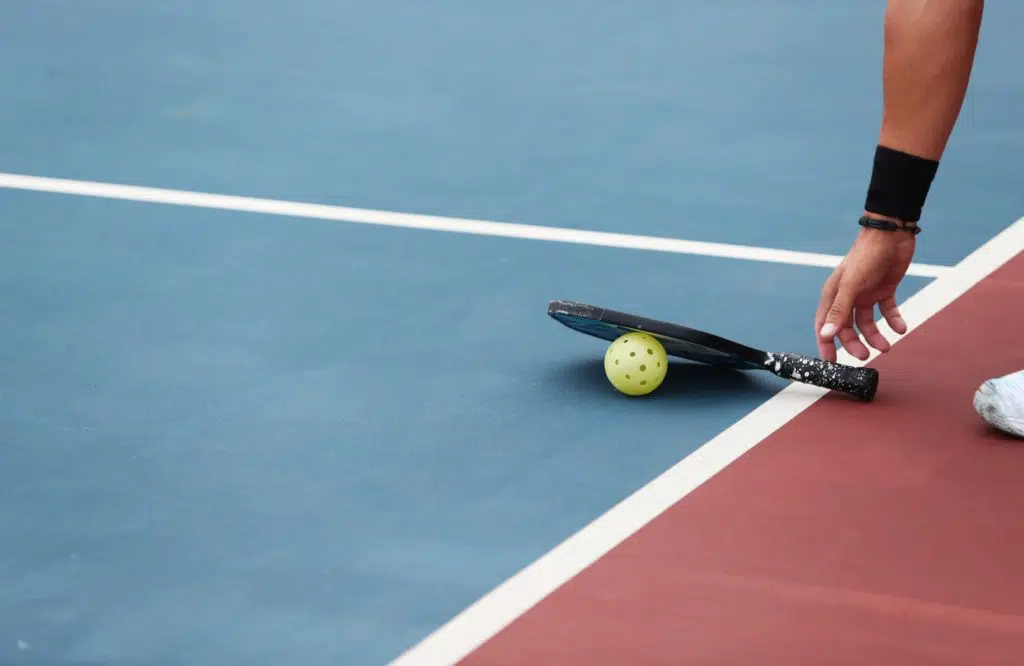Choosing a pickleball paddle might seem a bit overwhelming. There are a lot of different features you can choose from, so it can be hard to know what to look for. Luckily, we have researched for you. In this blog, we have put together a guide on how to choose a pickleball paddle.
Whether you are looking for your first pickleball paddle or your next paddle, there are important considerations to make before you buy. Finding the right paddle for yourself can make a huge difference in your game. We will cover the different features you should consider when looking for the right pickleball paddle for you. Don’t forget to invest in a pair of good pickleball shoes to take your game to the next level.
Find racket recommendations for all types of players in our guide Best Pickleball Paddles of 2022.
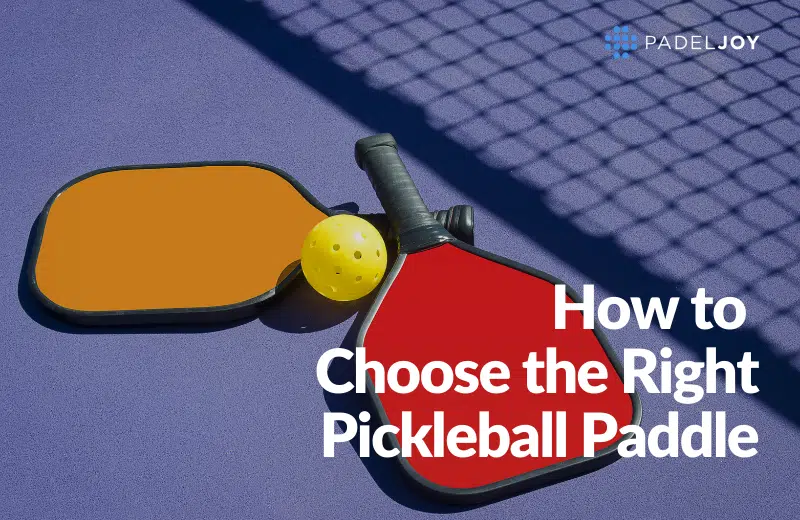
To help you understand how to choose a pickleball paddle, we have listed the five key factors to consider below.
One of the most important things to consider when selecting a pickleball paddle is the weight. The weight of the paddle impacts the ability to play the game.
Weight guidelines for paddles are as follows:
- Light paddles (<7.2 oz)
- Mid weight paddles(7.3-8.4 oz)
- Heavy paddles (>8.5 oz)
Lightweight pickleball paddles
As we explain in our buying guide for beginners, new players will want to select a lighter paddle that is easier to swing and provides more accuracy and wrist action. You will get tired quickly if you are using a paddle that is too heavy for you.
Being known for their control, lightweight paddles are ideal for touch players who dink and prefer drop shots to hard shots and slams. Additionally, they provide a faster response time when you are at the net, and the ball is blasted at you. The drawback is that lighter paddles offer less power.
If you have previously played ping pong or racquetball and are switching to pickleball, lightweight paddles will work well since those sports involve wristy action.
The light racket is a popular choice among doubles players.
Don’t go too light
The use of a paddle that is too light for you can cause several problems. If you use a paddle too lightweight for your strength, you can sometimes miss shots because you’re swinging faster than you usually do.
In addition, a light paddle will cause your shots to be less potent than they could be. You may be using a lightweight paddle if you find that your shots are less powerful than usual. Paddle weight is the key to power, so consider getting a heavier paddle if that’s the case.
Mid-weight pickleball paddles
A medium-weight paddle is a good option if you aren’t sure what weight is right for you and can be used by players at all levels.
Mid weight paddles are a good combination of power and control. Players who are looking for a game with both finesse and power should choose paddles that are neither too light nor too heavy. Even though they don’t provide the same level of control or power as the light or heavy paddles, they are still a good choice for all play situations.
Heavyweight pickleball paddles
Players who prefer power over control tend to use a heavier paddle, as they can generate more pop on the ball.
A heavier paddle will allow you to swing the paddle faster but require more effort to get the paddle up to that speed. In addition, the power comes at the expense of some control.
In singles, heavy paddles are more common as power beats finesse, like in singles tennis. Dinks and drop shots aren’t as prevalent in singles pickleball as they are in doubles pickleball.
Don’t go too heavy
The use of a paddle that is too heavy for your strength can cause several problems. If you get a paddle that is too heavy for you, you will not control the ball, and it will go in different directions than you want it to.
In addition, a heavy paddle is more likely to cause injuries. For example, after playing pickleball for a day, you may experience pain in your wrists or even in your arm. In this case, the paddle could just be the cause, and you should consider getting a lighter paddle.
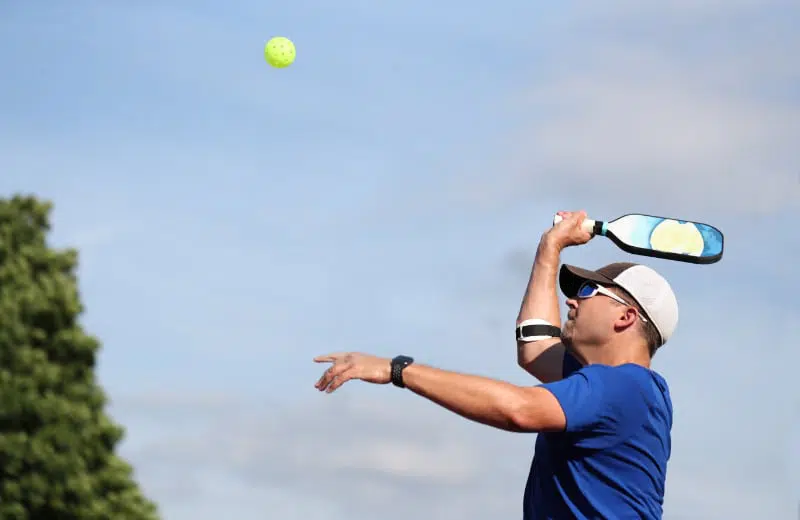
How to choose pickleball paddle weight
To determine your ideal pickleball paddle weight, you will need to consider a few different things. Unfortunately, when it comes to pickleball paddles, no one weight fits all solutions.
The first is your strength. You will want to find a paddle within your strength range and avoid a too-heavy paddle for you. A lightweight paddle is easier to swing and causes less muscle tension than a heavy paddle and vice versa.
Next, think about what you value most in a game: control or power? Go light for control and heavier for power.
Try out a few different paddles to see which one feels the most natural to you. If you are a beginner, it may take a couple of times before figuring out which one is the best fit for you.
Avoid tennis elbow
When choosing a pickleball paddle, you will want to make sure that you choose one that gives you the right balance and is comfortable. This way, you can avoid problems such as tennis elbow.
When hitting the ball, lighter paddles can increase vibrations and stress on your elbow. Therefore, a lightweight paddle might not be the best choice if you are prone to tennis elbow.
A drawback of heavy paddles is they can fatigue your arm faster. It can also pose a problem for players with tennis elbows.
In general, midweight paddles are an excellent place to start if you suffer from tennis elbow. However, consider other factors, including material and shape, as they may affect how comfortable and satisfying your pickleball paddle feels.
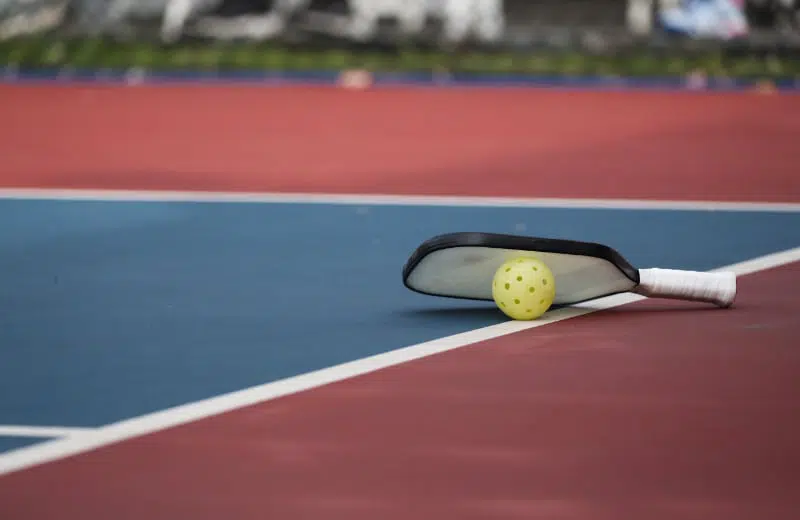
Another important factor to consider when selecting a pickleball paddle is the grip size. Pickleball paddle grips are typically between 4 and 4.5 inches in circumference.
A wrong pickleball grip size may contribute to injuries, so finding a good pickleball grip size may help get rid of pickleball elbow pain.
How do you measure a pickleball paddle grip?
Your choice of pickleball grip size may come down to your personal preference. Having said that, there are a few tests you can do to determine what is your best pickleball grip size.
Index finger test for pickleball grip size
Tennis racquet grip size is often determined by this method, but it is equally applicable to pickleball grip size. Using this method requires a pickleball racquet with a known grip size that has not been modified or built up.
Using an Eastern pickleball paddle grip, place the palm of your hand against the same bevel as the string face on the racquet. Put the index finger of your other hand in the gap between your fingers and the palm of your hand.
When your index finger has no space to go, the grip is too small, and if there is too much space between your fingers and palm, the grip is too large.
Hand measure test for grip size
The second method requires no tennis racquet or pickleball paddle, but you will need a tape measure or ruler.
You could find a good pickleball grip size between the ring fingertip of your paddle hand and the middle crease of your paddle hand. So whatever measurement you get – from the tip of your paddle-hand ring finger to the center crease of your paddle-hand palm – is your pickleball grip size.
Go for a smaller grip size when in doubt
Consider choosing a pickleball paddle with a smaller grip size if you are in between two sizes. You can increase a grip’s size by adding additional pickleball grips or overgrips, but you can’t decrease its size.
On another note, a small pickleball grip size will allow for more wrist action on shots, resulting in better control and spin.
Choosing a pickleball paddle can also be influenced by the material it is made of. There are advantages and disadvantages to each of these materials.
Popular pickleball paddle materials include:
- Wood – Cheapest and heaviest.
- Graphite – Expensive and lightweight. Excellent performance.
- Composite – A middle ground between wood and graphite. Available in a variety of weights and prices.
Wood
Wood pickleball paddles are the cheapest pickleball paddles and are very durable, but they are also the heaviest and the least technologically advanced.
Because they are easy to produce, retail prices are lower. Wood paddles are often used by beginners who want an inexpensive pickleball paddle. If you are interested in purchasing a wood paddle, you can find them at the pickleball section at Walmart.
If you plan to play pickleball frequently, we recommend skipping wood paddles and going for a composite or graphite paddle. Prices have dropped, and it’s now possible to find very affordable paddles.
Composite
Pickleball paddles made of composite materials have become increasingly popular. A composite paddle usually has a fiberglass or carbon fiber surface and a composite core. The cores may be made from polymer or aluminum. Alternatively, Nomex, which is rigid nylon, is used for the cores.
One of the advantages of composite paddles is using a textured surface to help players generate more spin on their shots. Additionally, these pickleball racquets are considerably lighter than wooden models, making them easier to handle.
You can find composite paddles in various price ranges if you are in the market for a good paddle. Many models are affordable and offer great performance.
Graphite
In general, graphite pickleball paddles are the most expensive. A graphite pickleball paddle, even a low-end one, will generally be more expensive than a paddle made of composite materials.
In addition to being lightweight, graphite paddles are also known for being easy to control. So if you want to make precise shots and control your game, these are a great choice.
When choosing a pickleball paddle, competitive players usually pick graphite paddles. Although the graphite on these paddles is very thin, it is incredibly strong. Therefore, you may want to consider graphite paddles if you are simply looking for the most desirable paddle that professionals would recommend.
Graphite pickleball paddles typically weigh between six and nine ounces. As with the composite paddles, these will also be constructed using a core. The cores may be made of aluminum, polymer, or Nomex honeycomb. One thing that makes graphite paddles stand out is the graphite face found on both sides of the pickleball paddle.
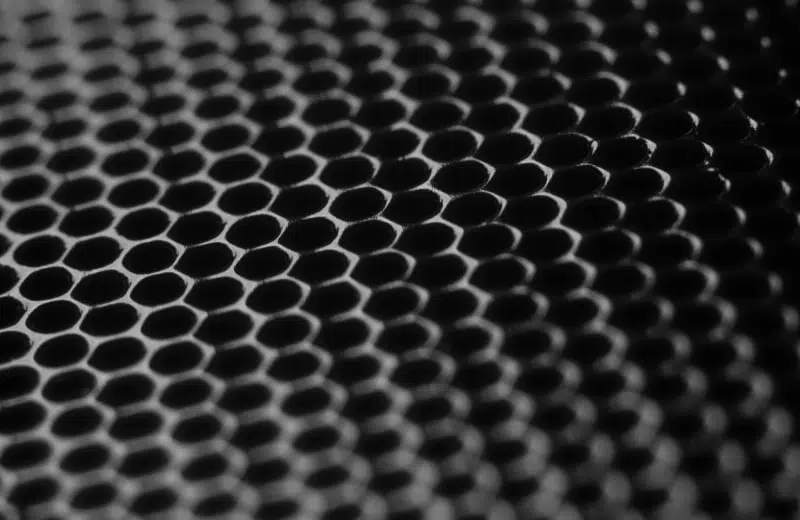
The material of the core is essential when choosing the right paddle for you. In general, there are three materials used to make pickleball paddle cores:
Aluminum
The most popular pickleball rackets often have aluminum cores. This makes them stronger while remaining lightweight. A paddle with an aluminum core is a wise choice if you value maneuverability and control.
In contrast, paddles with aluminum cores may be lacking in power. As a result, you shouldn’t expect the same driving power as someone using a heavier core type.
Nomex
Nomex™ honeycomb cores are also very popular and are used to create durable pickleball rackets. These paddles are made from cardboard-like material. For durability, the material is dipped in a special resin and arranged in a honeycomb pattern.
Nomex was the first material to be used for composite paddles. Many pickleball players, both professionals, and enthusiasts prefer the feel of paddles with a Nomex core. For those who want power and precision, these cores are very popular.
Additionally, this paddle will be the loudest and hardest on the market. Each time you make contact with the ball, you will hear a loud sound. If you prefer quiet paddles, you should choose one of the other options.
Polymer
Polymer cores are made from a special blend of plastic and are gaining a great deal of popularity.
Polymer cores are the newest of the three core styles. The soft nature of a polymer core paddle makes it a quiet paddle.
This is a smart choice if you’re frustrated by hearing a loud sound every time you contact the ball. Their muted sound also makes them ideal for people who live in gated communities.
Poly cores come with a few disadvantages, the main one being the lack of power compared to a Nomex core. Due to its softer nature, a polymer core absorbs some of the power of your shots. A polymer paddle may be the best option if you prefer control to power.
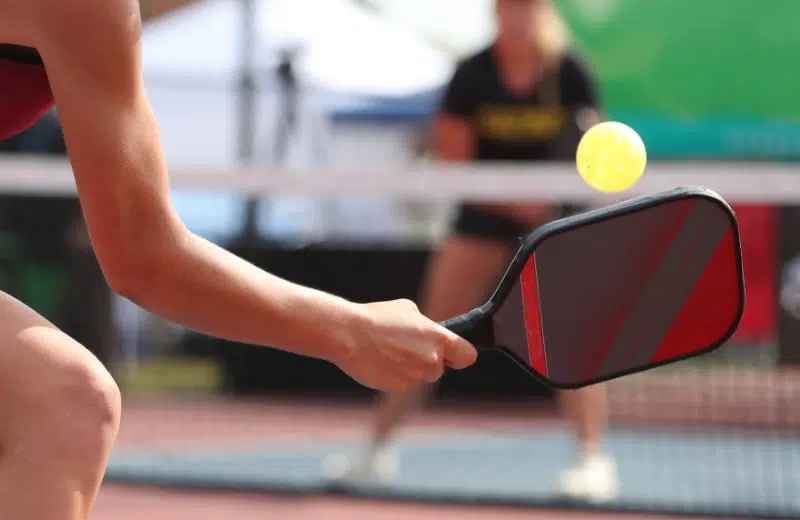
Pickleball paddles come in a variety of shapes and sizes. However, according to pickleball rules, the length and width of the pickleball paddle (including the edge guard and cap on the handle) cannot exceed 24 inches.
Three common types of paddles are available; standard, elongated, and paddles with longer handles.
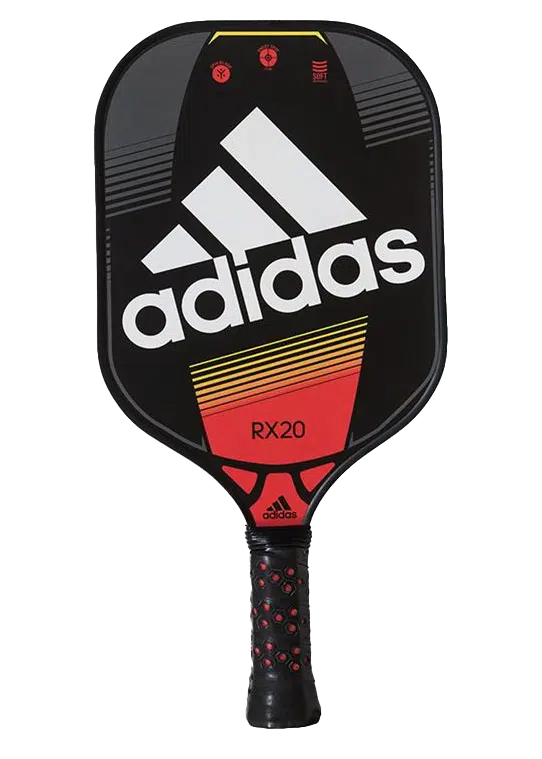
Standard pickleball paddle shape
The standard shape of the paddle is 16 inches long by 8 inches wide, which is in line with the official USAPA regulations. These paddles are also known as wide body paddles.
With this shape, you can achieve a great balance between reach, power, and control. As they offer more area for ball contact, they are a good choice for beginners.
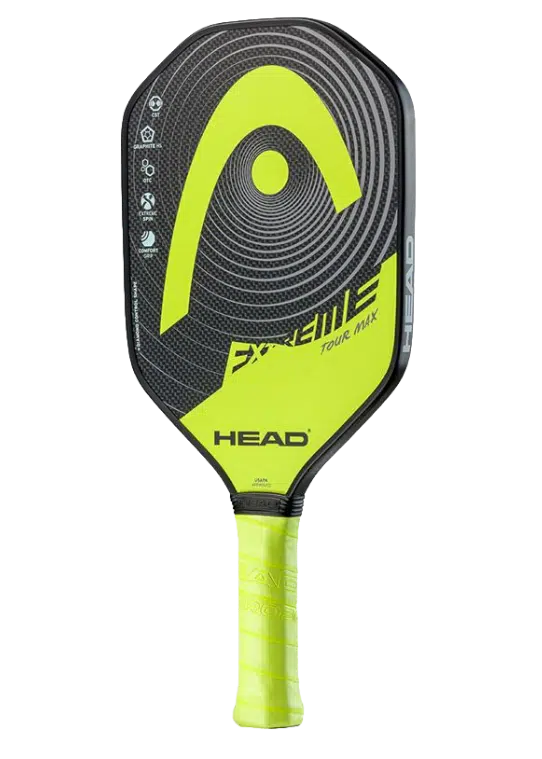
Elongated pickleball paddle shape
A long pickleball paddle is typically between 16 and 17 inches. Therefore, it has a thin body shape that is narrower than a standard paddle.
On the other hand, the shape provides more reach, power, and spin and less control. As a result, many singles players prefer this shape.
Pickleball paddles with longer handle
The handles of some pickleball paddles are longer than others. Players who have a two-handed backhand prefer paddles with longer handles. These paddles will be larger in shape but with a smaller paddle face and more handle.
Oversized pickleball paddles
With an oversized pickleball paddle, the face of the paddle is longer but the handle is shorter. It is intended to increase the sweet spot by providing a longer hitter surface.
In some cases, these paddles exceed the size regulation of 24″ most clubs require. But, most of the time, these paddles are designed for fun and aren’t intended for competition.
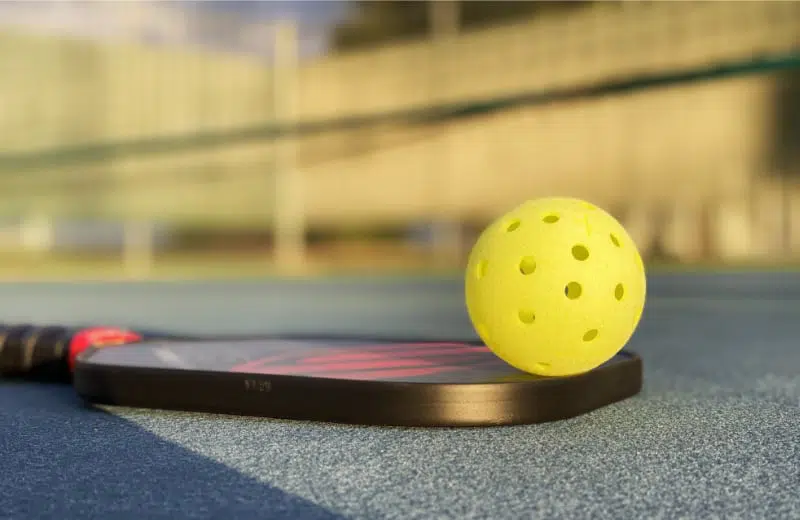
A paddle edge guard is a piece of material that wraps around the paddle. The majority of players in the game use edge guards on their paddles. However, having an edge guard has its pros and cons.
The advantage of having an edge guard is that it helps protect your paddle. In contrast, a paddle guard may interfere with your game. It creates a lip around the edge, and if a ball hits the guard, a miss-hit shot can occur.
Some players prefer edgeless pickleball paddles to edge guards. Paddles without edge guards have a flat surface that provides the widest playing surface without risk of a missed ball.
However, with no edge guard protecting the paddle, continuous use can lead to chips and dents.
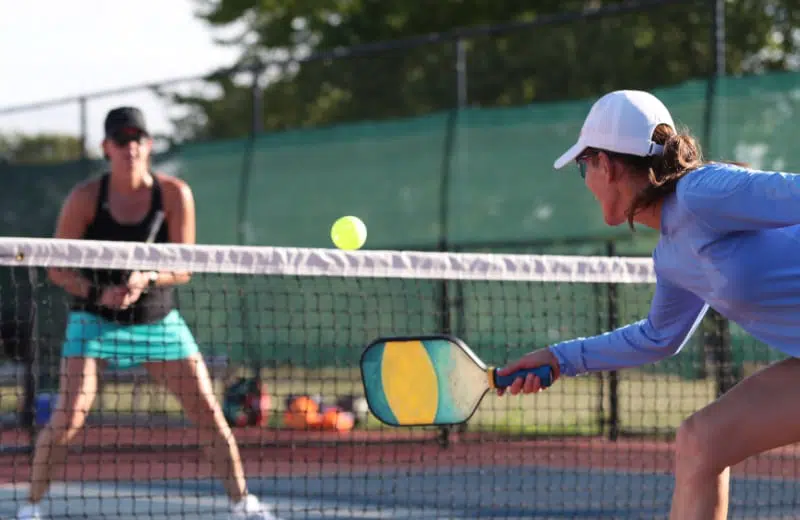
It’s important to choose a pickleball paddle that suits you, since the right racket can make all the difference in your game. The paddle’s weight directly impacts your play. Lighter paddles are great for touch players who prioritize ball control, while heavyweight pickleball paddles are good for power.
Another important consideration when choosing a pickleball paddle are the grip sizes. As a beginner, it may take a few tries before you find which one is best for you and what you value most in a game. The wrong pickleball grip size may result in injuries such as tennis elbow.
Pickleball paddle materials include wood, graphite, and composite. Most competitive players choose graphite paddles. They are extremely strong and lightweight.
Wooden paddles are the most heavy and least technologically advanced. If you plan to play pickleball frequently, you should get a composite or graphite paddle instead of a wood paddle.
Pickleball paddles come in a wide variety of sizes and shapes. However, the length and width must not exceed 24 inches. A standard paddle measures 16 inches long by 8 inches wide. The longer paddles provide more reach, power, and spin, but less control. Oversized paddles are designed for fun and aren’t intended for competition.
Take the time to try out a few different options before buying a new paddle to learn which one you prefer. But most importantly, have fun playing pickleball. Are you ready to get started? You can out where to play in our guide for finding pickleball courts near you and learn more about how to play the game in our Pickleball Rules guide.
